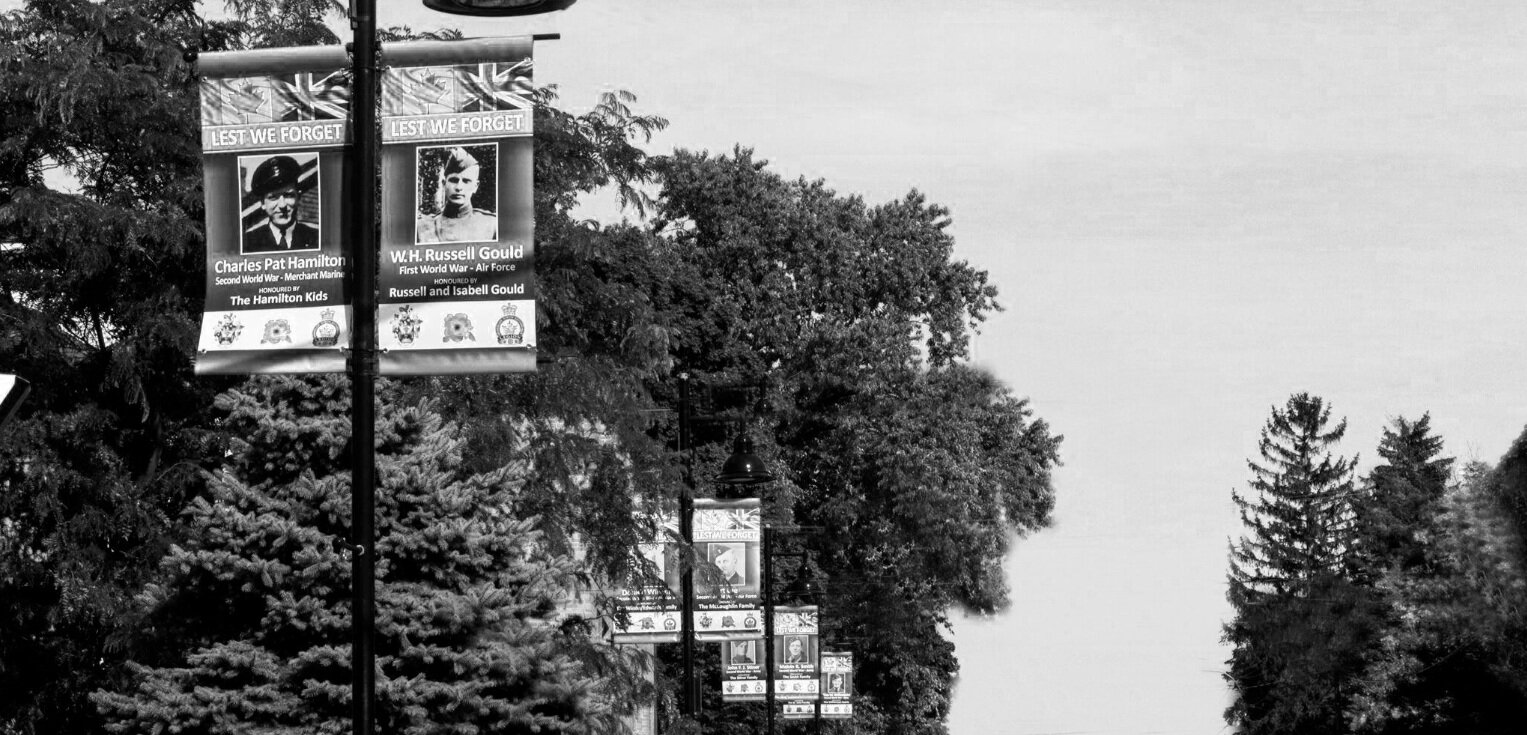
Rae Ferguson
Rae Martin Ferguson was born on January 1, 1893. He lived in Uxbridge and worked as a
clerk for the Grand Trunk Railway. He enlisted at the age of 22 on January 12, 1916, joining the
116th Battalion under the command of Lt.-Col. Samuel Sharpe. His attestation papers record his
particulars: not married, height 5’ 9’, fair complexion, grey eyes and dark hair. After a medical
examination, he was declared “fit”, and became a Private in the Canadian Expeditionary Force.
Great progress was made recruiting men from the Uxbridge area, and by May the
Battalion numbered over 1,140! They went through basic training, and on July 23 the 116th
Battalion embarked and set sail from Halifax for Great Britain on HMT “Olympic”, the sister ship
to RMS “Titanic”.
The Battalion spent several more months training to fight while based at Witley Camp in
Surrey, about 65 km southwest of London. The Surrey countryside provided an ideal landscape
for artillery training, with rolling hills, sandy soil, as well as good roads and beautiful scenery
and villages. The camp provided the soldiers with housing, medical attention, recreation
facilities, and shops, also known as ‘Tin-Towns,’ found on the edge of the camp.
In early 1917, the Battalion was told to prepare to be sent to France, and very early on
the 11 th they boarded a train that took them to Folkestone where they embarked on HMT
“Victoria” to cross the English Channel, arriving in Boulogne, France. More training at St.
Martin’s Camp prepared the 116th Battalion for the battles to come. The following account of
the Battalion’s wartime activity does not mention Rae specifically; however, he would have
participated in all these famous battles.
In early April they were involved in the Battle of Vimy Ridge, first as reserve troops and
then maintaining front-line trenches and reconstructing roads. On July 23 the Battalion took
part in a successful raid on the village of Avion. August saw them at the front lines in the Battle
of Hill Seventy under the command of Canadian Gen. Arthur Currie.
October saw the 116th travel to Belgium. They were part of the Canadian Corps that took
part in many battles around Passchendaele and Ypres. They finished the year there, working in
knee-deep, sticky mud in the trenches, occasionally losing a boot and socks to the efforts to
extricate oneself from it.
The 116th was back in France in 1918 and took training in open warfare to prepare them
for the next major offensive. During this time, they learned of the death of Col. Sharpe in
Montreal. Their training was put to the test in August in the Battle of Amiens. The 116th
achieved their objective and captured Hamon Wood on August 9. Later that month they joined
the Royal Canadian Regiment and successfully captured the village of Parvillers. At the end of
September, they were again successful by helping to capture Cambrai.
Throughout the war, Rae was with the 116th . He had brief times away on leave. It’s
remarkable that, considering the conditions and overall casualties of the Battalion, he was very
lucky not to get sick, wounded, or worse. He was awarded the British War Medal (given to
British and Colonial servicemen) and the Victory Medal (given to all ranks of fighting forces, in
conjunction with the BWM).
He returned to Uxbridge after demobilization. For a while he lived with his
brother in Weyburn, Saskatchewan, but returned to Uxbridge and worked as a taxi driver. He
married Ella Alberta Clyde in 1928. She had also served in WW1 as a nurse in the Canadian
Army. In 1950 Rae was elected Warden for the County of Ontario. Rae also served as Reeve of
Uxbridge for 16 years. Ella died in 1956 and Rae married Olive Irene Braeden in 1958. He died in
1963 at the age of 70 and is buried in the Foster Memorial Cemetery.
